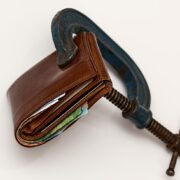A large part of any financial management instrument is the word budget. This is the process of allocating resources to things that you need. While also ensuring that you don’t overspend. A budget is a financial plan that outlines your income and expenses over a period, usually a month. In every budget, you watch your spending and track your progress. Budgeting also identifies areas where you can cut back to save more.
Know that creating a budget is not enough; you must also be able to stick to it to achieve your financial goals. This means your budgeting goals have to be realistic. You cannot expect to save $500 from a $600 dollar salary. In this article, we will discuss real ways you can budget for your monthly expenses and stick to it.
Determine Your Income
The first step to budgeting is determining your income. Your income is the amount of money you earn in a given period, usually a month. It includes your salary, wages, commissions, and any other sources of income. If you have a fixed income, such as a salary, determining your income is straightforward. But, if you have a variable income, such as commissions. You need to estimate your income based on your past earnings.
Once you have determined your income, you can use it as a basis for creating your budget. Always be realistic about your income and don’t overestimate. Overestimating your income will lead to overspending.
List Your Expenses
The next step is to list your expenses. Your expenses are the items or activities that take money out of your pocket every month. Most people have expenses such as rent, utilities, groceries, and entertainment. It helps to categorize your expenses into fixed and variable expenses. Fixed expenses are those that remain the same every month, such as rent and car payments. Variable expenses are those that fluctuate every month, such as groceries and entertainment.
Here is tip to ensure you are keeping track of all your expenses. you can review your bank statements and credit card statements for the past few months. This will give you an idea of your spending habits and help you identify areas where you can cut back to save more.
Set Your Financial Goals
Setting financial goals is the Northstar to sticking to your budget. Why are you budgeting? What is your goal? Your financial goals could be short-term, such as paying off credit card debt. They could also be long-term, such as saving for retirement. Focus on your financial goals and divide your resources to achieve those goals.
Another tip When setting your financial goals is to be SMART. This is an acronym that means specific, measurable, achievable, relevant, and time-bound. Your goals must be the following:
- They must be SPECIFIC-what specific thing do you want to budget for?
- They must be MEASURABLE-How will you measure progress toward your goal? how much will you save each month?
- They must be ACHIEVABLE-You cannot set a goal to be a billionaire by the end of the year and you are in debt. That is unfathomable.
- They must be RELEVANT to what you want to achieve
- Finally, they must be TIME-BOUND to create a sense of urgency. Our brains treat things that are urgent with a sense of importance. Use this to your advantage.
Keeping your goals SMART will help you stay focused and motivated.
Allocate Your Resources
Once you have determined your income and listed your expenses. You must then set your financial goals, and then you can allocate your resources. The goal of budgeting is to ensure an intelligent division of resources.
To divide your resources, you can use the 50/30/20 rule. The 50/30/20 rule suggests that you divide 50% of your income to your needs. The other 30% goes to your wants. The final 20% goes to your savings and debt repayment.
Your needs are the things that you must spend money on, such as rent, utilities, and groceries. Your wants are the things that you would like to spend money on, such as dining out and entertainment. Your savings and debt repayment include your emergency fund. It may also include retirement savings and debt payments. Depending on your goals you may want to put more towards saving.
Always adjust your allocations based on your financial goals and priorities. For example, if you have a high credit card balance, you may want to prioritize debt repayment.
Watch Your Spending
Monitoring your spending is essential to sticking to your budget. It helps you identify areas where you are overspending and where you can cut back to save more. To track your spending, you can use a budgeting app or a spreadsheet to keep track of your income and expenses.
When watching spending, always ensure that you update your budget at regular intervals. Reflect on any changes in your income or expenses. This will help you stay on track and avoid overspending.
Cut Back on Unnecessary Expenses
Cutting back on unnecessary expenses is one of the most effective ways to stick to your budget. To identify unnecessary expenses, you can review your spending habits. Look for areas where you can cut back without affecting your quality of life.
For example, you can cut back on dining out by preparing meals at home or by bringing your lunch to work. You can also reduce your entertainment expenses by watching Netflix instead of going to the movies.
Remember that cutting off unnecessary expenses does not mean you can’t enjoy yourself. It means finding ways to save money without compromising on your quality of life.
Build an Emergency Fund
Building an emergency fund is another tool for achieving financial stability. An emergency fund is a savings account that you can use to cover unexpected expenses. Expenses such as car repairs or medical bills always arise.
To build an emergency fund, you can set aside a part of your income to save every month. You can start by setting aside a small amount and apply a gradual increase as your income grows.
Having an emergency fund gives you peace of mind. It also protects you from financial setbacks that can derail your budget.
Review and Adjust Your Budget
Reviewing and adjusting your budget with regularity to achieve your financial goals. As your income and expenses change, you may need to adjust your budget. This ensures that you have a proper division of your resources.
To review and adjust your budget, you can set aside some time every month to review your income and expenses. This will help you identify areas to reduce spending.
Remember that budgeting is a continuous process, and it requires discipline and commitment. It is very much like building a habit it takes a while to get going but it is like a snowball. The habit gets stronger and stronger until it becomes second nature. If you would like to try a free budget planner you can click here
Conclusion
Budgeting is one of the main tools in your financial tool belt. It helps you allocate your resources in an effective way. It also allows you to meet your needs while ensuring that you don’t overspend. Budgeting for your monthly expenses has several ingredients. You must determine your income, list your expenses and set your financial goals. You then divide your resources, watch your spending, and cut back on unnecessary expenses. Build an emergency fund, and review and adjust your budget.
By following these steps, you can achieve financial stability goals. If you don’t achieve your goals one month remember that it is a process. It takes time to build the habit of budgeting but With patience and perseverance, you do it.
To check out our post on 5 steps to get out of debt click here. See you next post














Comments